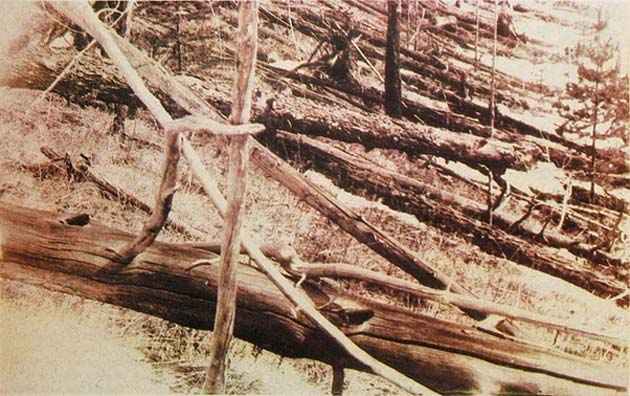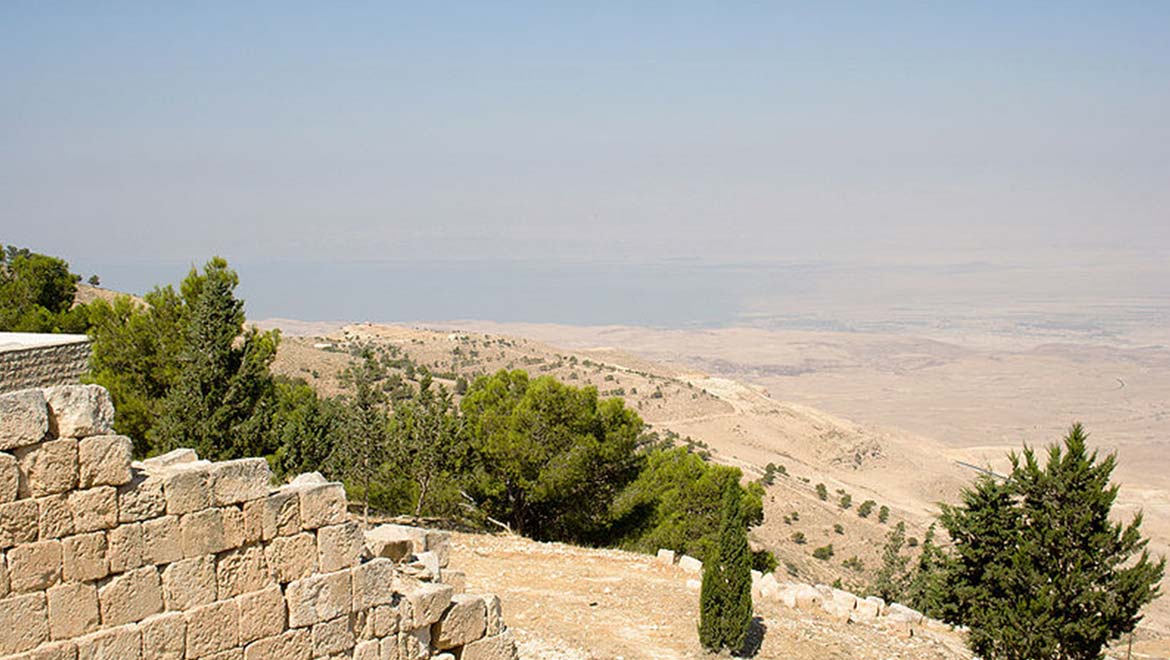Meteor strikes on the Earth are incredibly rare. It seems this is just as well as their effects on a planet can be catastrophic. For example, the Chicxulub event, which may have effectively eliminated the dinosaurs and brought about the mammal-dominated age, is strongly linked to such an impact. However, it is apparent that large meteors can do damage, even if they do not hit the Earth. Even ones that remotely enter the atmosphere can wipe out a reasonably large area. This effect is now attributed to the mysterious disappearance of an entire human civilization that was known to exist in the Bronze Age.
The Missing City
This state (rather, city-state) was known as Tall el-Hamman, and once thrived in an area now located in the modern nation of Jordan. Archaeological evidence showed that Tall el-Hamman was once a fully-established city. It also controlled an area around it that brought its total surface area to just over 50 hectares. This space included strategic border towns (hallmarks of the standard well-to-do Bronze Age city) which were spaced out in a ring that put them about 3 km each away from Tall el-Hamman proper. The area also included rich, fertile farmland, fortifications and other trappings of a city capable of defending itself. They must have worked well as archaeologists have yet to find evidence of successful military incursions on the city.
Despite all of Tall el-Hamman’s providence and apparent power, its people and even the farmland disappeared off the map without a trace and explanation.
This can be attributed to a single event that took place an estimated 3,700 years ago. Whatever occurred at the time also drove a significant amount of Dead Sea brine over the area, rendering it covered with heated anhydrides and thus, inhabitable. Indeed, it was only 600 to 700 years later that humans could venture back to the area in any respect.
So, what happened to the ancient city-state?
The Middle Ghor Event
The answer to this question has recently been uncovered by a team collaborating across several universities and institutions such as DePaul University, Elizabeth City State University New Mexico Tech, Northern Arizona University, NC State University, Trinity Southwest University, the Comet Research Group, and Los Alamos National Laboratories.
The group has reported on evidence indicating a mid-air meteoric explosion that devastated the 500-square kilometer region (now known as the Middle Ghor), which encompassed Tall el-Hamman and its satellite towns. The explosion was so powerful that it destroyed all of its mud-wall buildings, leaving only their foundations for archaeologists to find.
This explosion also had other devastating effects, such as melting pottery into glass shards, which may have then rained down on the Bronze Age inhabitants. These people, as many as 65,000 in number, could also have been wiped out by the blast. The Middle Ghor event may have ended in a colossal shockwave, thus causing the abrogation of fertile soils and the ingress of brine from the Dead Sea (which was located to the south of Tall el-Hamman).
These pieces of evidence could be how one meteor wiped out an entire thriving city.
This new research has been published in the Proceedings of the 2018 American Schools of Oriental Research annual meeting.
The paper includes abstracts on the data, on what is now known as the 'Middle Ghor Event,' as well as that on a project conducted by a researcher from Trinity Southwest University that provides concrete evidence that Tall el-Hamman even existed.
This study may also inform of another similar event in more recent history - the devastation of Tunguska. Tunguska was a region in Northern Siberia encompassed by Krasnoyarsk in the modern era. In 1908, reports of an explosion of unprecedented magnitude started to emerge. According to witnesses, the sky ‘split open’ and exhibited fire from end to end. There was evidence of a corresponding colossal fireball that may have been up to 100 meters across, which obliterated millions of trees in Tunguska’s taiga forest. The area was scarcely populated, although the reindeer that lived there died in large numbers. The 'Tunguska Event' was also felt in the nearest human settlements (about 35 miles away).
Delays in gaining access to the site, the lack of any clear impact zone or crater, and considerable debate meant that scientists took hundreds of years in reaching a conclusion on what happened at Tunguska. Theories that arose from the research there ranged from extraterrestrial vehicular collision to a black hole somehow encroaching on the atmosphere over the region.
Eventually, however, a less fantastical analysis of the samples taken from Tunguska led to assertions that a meteor reacted with the atmosphere, much as it had had over Tall el-Hamman. This was backed up by the discovery of minerals and deposits, including lonsdaleite (a form of carbon lattice associated with the explosion of a graphite-rich meteor), meteoric nickel and tiny rocks from the body of the putative cosmic body.

Trees blown flat in the area around Tunguska after the ‘Event.’ (Source: Wikimedia Commons)
Are Meteors Really Such a Threat?
Events such as those at Tunguska, as well as the more recent example at Chelyabinsk, may demonstrate that meteors could be a profound threat to life on Earth. These events are also now associated with energy levels of between 2.092 and 83.68 petajoules.
On the other hand, meteoric events like these are also extremely rare: we have after all just seen that the nearest cosmic objects to approach the planet – the recent 'close approaches' observed by NASA, followed by the Leonid meteor shower - were all more than 200,000 miles away from the planet as they skimmed by it. In the case of the meteor shower, fragments from the comet in question burned up harmlessly in the atmosphere, as indeed the vast majority of meteors do.
Research on events such as Middle Ghor and Tunguska have shown us that only meteors of significant size (put by some scientists at larger than a football field) are anything to worry about in terms of life continuing to exist on Earth. It is to be hoped that the technology that detects – and, perhaps, even deflects – these bodies will continue to develop in the future.
Top Image: The Dead Sea in modern-day Jordan. (Source: Wikimedia Commons)
References
An exploding meteor may have wiped out ancient Dead Sea communities, 2018, Science News, https://www.sciencenews.org/article/exploding-meteor-may-have-wiped-out-..., (accessed 25 Nov. 18)
Asteroids Fly Close To The Earth In November 2018 – Anything To Worry About? 2018, Evolving Science, https://www.evolving-science.com/space/asteroids-fly-close-earth-00840, (accessed on 25 Nov. 18)
Tall el-Hammam—City and State: Insights from 13 Excavation Season, 2018, Proceedings Of The 2018 American Schools Of Oriental Research Annual Meeting (page 96), http://www.asor.org/wp-content/uploads/2018/10/2018-Abstract-Book_update..., (accessed 25 Nov. 18)
The 3.7kaBP Middle Ghor Event: Catastrophic Termination of a Bronze Age Civilization, 2018, Proceedings Of The 2018 American Schools Of Oriental Research Annual Meeting (pages 151-2), http://www.asor.org/wp-content/uploads/2018/10/2018-Abstract-Book_update..., (accessed 25 Nov. 18)
N. A. Artemieva et al. (2016), ‘From Tunguska to Chelyabinsk via Jupiter’, Annual Review of Earth and Planetary Sciences, 44 (1), pp. 37-56







James Coop (not verified) –
It didn't take hundreds of years for scientists to reach the Tunguska region of Siberia. The event happened in 1908.